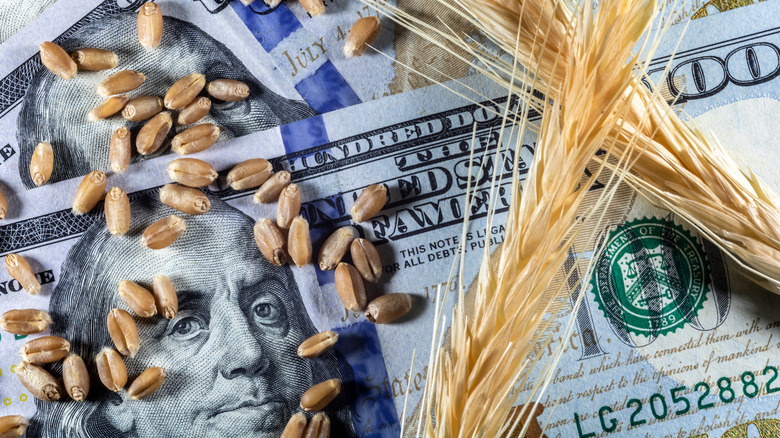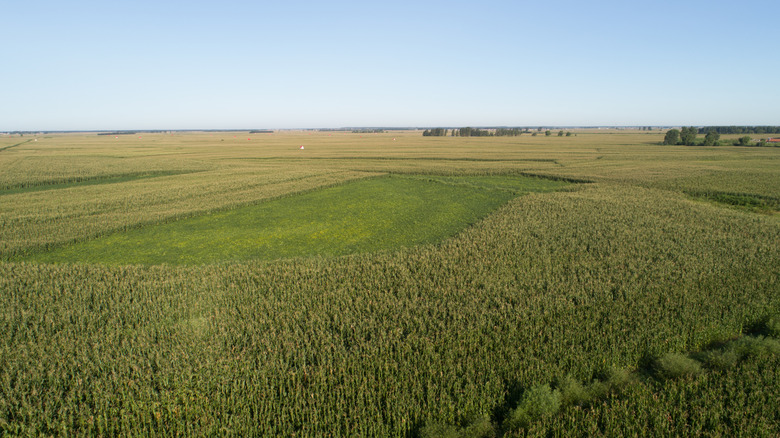Which Foods Does The US Export Most Of?
People who went through the American education system probably remember being taught that the midwestern states were the world's breadbasket. But you might want to know what the United States actually supplies the world with. Hint: it's not bread.
According to information shared by the United States Department of Agriculture (USDA), sales of American food and farm products reached $145.7 billion in 2020. Some top exports were dairy products with $6.5 billion in sales, prepared meals with $6.7 billion, beef with $7.6 billion, pork with $7.7 billion, and tree nuts with $8.4 billion. However, the two largest exports (which we'll discuss later) earned America more than any of these.
Where are all of these crops going? In 2020, South Korea spent $7.5 billion on American farm and food products, and the United Kingdom and the European Union spent $11.2 billion. Japan spent a bit more with $11.5 billion. Then, we see a large jump in America's neighbors, Mexico and Canada. Mexico bought $18.1 billion worth of crops from the United States, while Canada spent $21 billion. While these numbers are huge, there is one (probably unsurprising) purchaser that spent even more.
Corn and soybeans earn America the most
According to the USDA, the biggest purchaser of U.S. food products is China, with $26.4 billion spent in 2020. This may not come as a surprise with China's population — 1.4 billion people require a lot of resources.
So what food is America exporting the most? Corn, with a modest $9.2 billion in sales (China bought $1.2 billion in 2021), and soybeans with $25.7 billion (China contributed $14.08 billion in 2021).
For many, this might raise the question of why American farms seem to funnel corn and soybeans to China. In both cases, it's to feed their hog farms. Obviously, soybeans are used in a variety of human foods, but as Fast Company writes, soybeans are also a common feed for pigs. The demand is driven by an increasing population and, with it, an increasing middle class that expects to eat lots of pork. Originally, China grew a lot of its soybeans, but the water-intensive crop caused desertification in Northern China.
The dependency doesn't only go one way. When a potential trade war between the U.S. and China was brewing in 2018, The Counter covered how without China, the soybean growers in the United States would not be able to find buyers to cover the same massive demand for soybeans as China. To put it in context, the USDA has China's purchase of soybeans at $14.13 billion, while the next largest payment was made by Mexico with $2.67 Billion.

